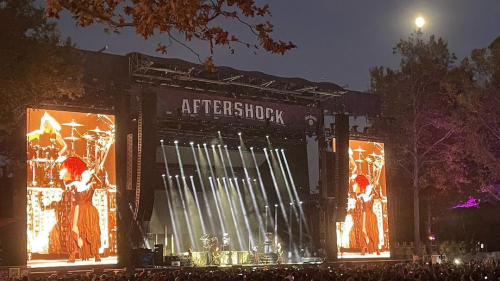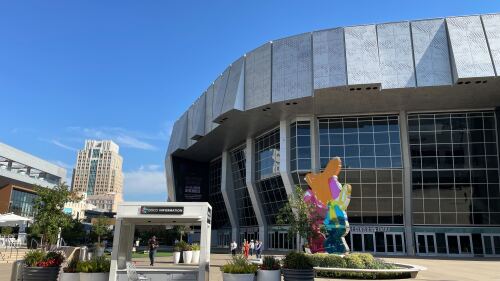There’s something about the eastern edge of L St. in Midtown, where the Sac-based, hyper-modern Sutter Medical Center meets the unadorned ramparts of the pre-Gold Rush Sutter’s Fort. In our opinion, more than anything, the juxtaposition draws attention to the historic state park.
In a way, the fort has always stuck out this way. It held a promise for a wholly different town — one never called Sacramento.
🇨🇭 A new Switzerland
When the German-born but Swiss-identifying John Sutter arrived in present-day Sacramento in 1839, he was a settler in a Mexican-governed province known as Alta California. That same year, he was able to convince the Mexican governor to grant him lands surrounding the Sacramento River — land that had been and still is the historical home of the Nisenan Tribe.
On this land at the banks of the American River, which itself was torn between the Mexican principality + the Indigenous Americans, John established a colony called New Helvetia in 1839. Helvetia is both the female personification of Switzerland, and the Latin name for the country.
🧱 Fortifying the colony
John had Sutter’s Fort built on a new and much larger property called Rancho Nueva Helvetia between 1842 and 1844. The fort’s 18-ft high and 3-ft thick walls — which enclosed a space about 500 ft long by 150 ft wide — were built by Indigenous laborers.
Despite hostile treatment, the support and contribution of the Mewuk and Maidu tribes to the creation of the Fort was instrumental — without it, it would have never been established or maintained.
The settlement, the first of its kind in the Central Valley of California — quickly attracted businessmen into the area, with the fort becoming the commercial center for the region. However, the power John had established for himself with the fort didn’t last long, nor did the developing town by the name of Sutterville.
⛏️ How gold led to Sacramento
When a carpenter by the name of James Marshall discovered gold at Sutter’s Mill in nearby Coloma on January 24, 1848, word quickly got out and John couldn’t control the gold fever. Not only did workers leave his New Helvetia colony en masse, but an international Gold Rush coursed into his land like a seasonal flood.
Noticing this, a local merchant decided to open a store at the port near the Sacramento River (think: where Old Sacramento is now) to catch the great influx of pioneers and gold seekers, which further weakened the promise of Sutter’s Fort. John decided to deed his property given to him by the Mexican Governor to his son. Yet, that same year, John Sutter Jr. would lead the charge of laying out a street grid for a town that would soon be called Sacramento City in honor of the river.
Despite the intense flooding the city experienced, its proximity to the river was its strength + soon eclipsed Sutter’s Fort + Sutterville in population. By 1854, the California State Legislature officially moved to Sacramento, cementing its future development. Yet, Sutter’s Fort still stands, a reminder of our past and what could have been as a city party to a Swiss-minded colony.











